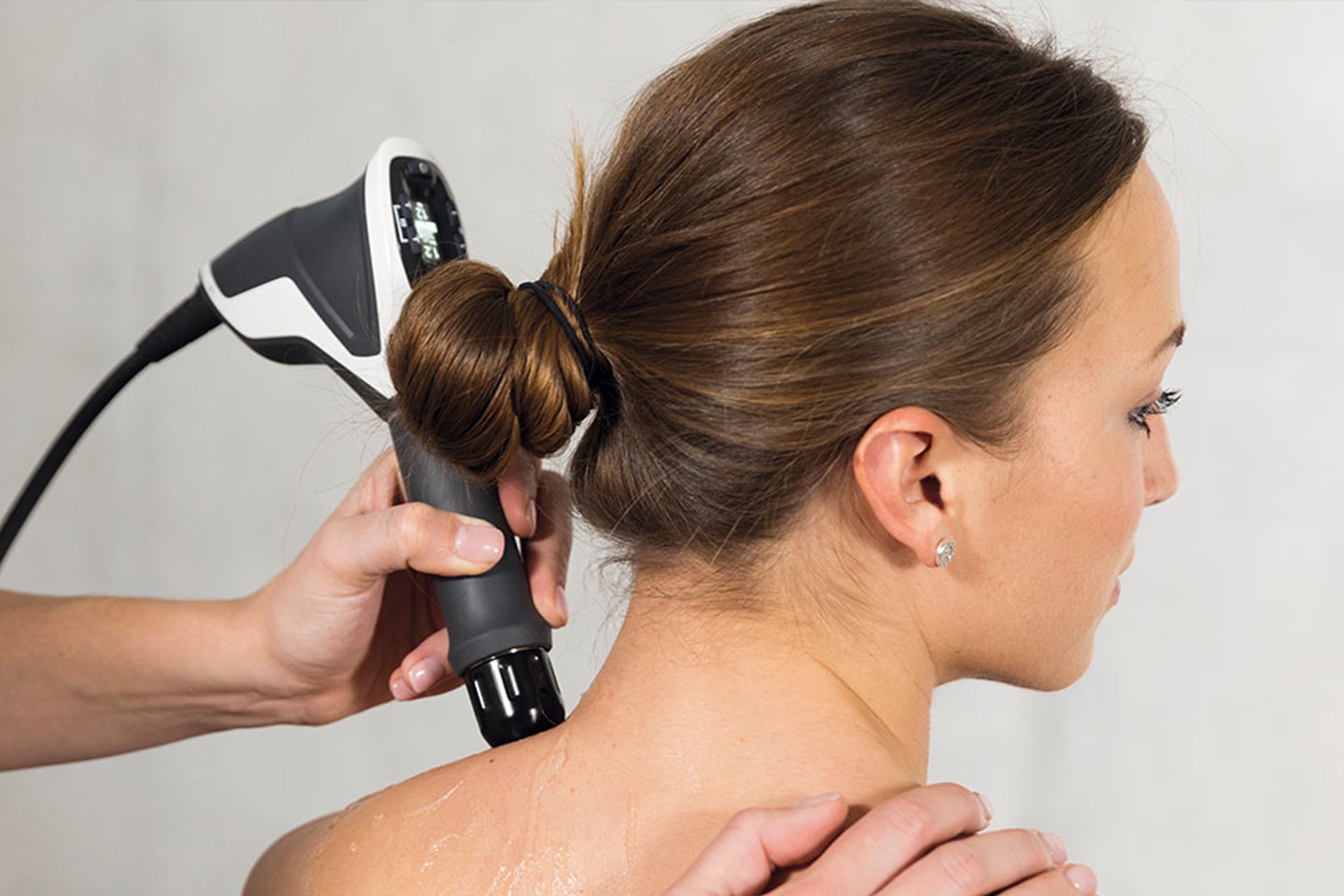How Shockwave Therapy Works
In general, shockwaves are audible high-energy sound waves. Since 1980, shockwaves have been used in the healthcare and medical industry, for example, to target kidney stones causing the stone to fragment and disintegrate. But in recent times, the technology has come a long way as a modern pain therapy tool. By using low-energy shockwaves on painful body parts and regions, trained practitioners can exert the curative action of the waves to accelerate the healing process across the entire body by stimulating the metabolic rate and enhancing blood circulation to allow damaged tissue to regenerate and heal.
___________________
Here at HelloPhysio, we use only the crème de la crème calibre of equipment (e.g., Storz Medical’s modular radial and focused Shockwave Therapy) because it matters when providing innovative pain management solutions for our clients. Not all equipment quality is the same and when it comes to your health and wellbeing, compromising quality isn’t an option.
___________________
Common Conditions Treated with Shockwave Therapy
Whether you’re suffering from hypersensitive points in the forearm muscles, lateral epicondylitis, or shin splints, find out more about musculoskeletal diseases that shockwave therapy can help treat:
- Achillodynia (Chronic Achilles Tendon Pain)
Achillodynia is a painful syndrome of the Achilles tendon, which begins at the calf muscles and infringes on the heel bone. Achillodynia is local and caused predominately by the chronic overuse of the Achilles tendon. - Calcific Tendonitis (Calcareous Shoulder)
In Calcific Tendonitis calcareous deposits are found in tendons and tendon insertions. Therefore, this disease is also called the calcareous shoulder. Most likely the supraspinatus tendon is affected. Acute inflammatory disorders occur, which are caused by reduced blood flow. These inflammatory disorders can mostly be felt at night or at rest. - Epicondylitis (Tennis and Golfer’s Elbow)
“Epicondylitis is a painful irritation of the tendons of forearm muscles. Typical is a circumscribed tenderness over the muscle attachment at the elbow and pain is precipitated or amplified upon actuation of these muscles. Depending on the location the epicondylitis is called tennis or golfer’s elbow. - Patellar Tendonitis (Jumper’s Knee)
The inflammation of the patellar tendon, also called patellar tendonitis, causes pain at the bottom of the kneecap (patella) – mainly on one leg. Patellar tendonitis also called Jumper’s Knee, often occurs in runners. - Plantar Fasciitis (Heel Spur)
The heel spur is a bony spur on the heel bone, which can occur on the soles of either rear or bottom. The lower heel spur is occasionally associated with inflammation of the Plantar tendon on the soles, which is called Plantar Fasciitis. - Tibial Stress Syndrome (Shin Splint)
Tibial Stress Syndrome, also known as shin splint, is a painful sensation in the shins. The disease usually occurs after exercise. One reason may be overused muscles. Shin splints most likely occur in sports with quick direction changes, but also in untrained athletes (e.g. after weight gain or after a change of footwear). - Other Disease Indications
In addition to the above musculoskeletal disease, we also treat trigger points of Periarticular shoulder pain, forearm muscles, Plantar foot muscles, Cervical Syndrome (chronic nape pain), Lumbago (lower back pain), Dorsalgia (chronic back pain), to mention a few.
For athletes, chronic pain management of a soft tissue injury and other musculoskeletal dysfunction can make training unbearable. With the state-of-the-art technology and manual therapy of our practitioners, the team at HelloPhysio can address virtually any trigger point issue or hypersensitive points in a palpable tense bundle of muscle fibres — trigger points cause pain during movements, sometimes even at rest.
Are you ready to live pain-free? Find out more about Shockwave Therapy in Singapore today.

